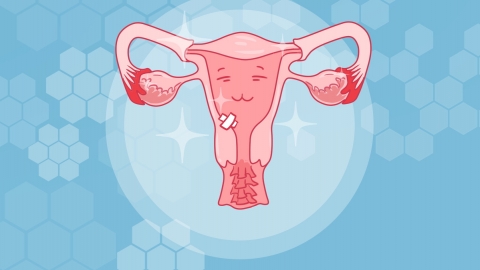What causes fluid accumulation in the rectouterine pouch?
Generally, fluid accumulation in the rectouterine pouch may be caused by follicular fluid accumulation during ovulation, retrograde menstrual blood flow, pelvic inflammatory disease, endometritis, salpingitis, and other factors. If discomfort occurs, it is recommended to seek timely medical treatment at a regular hospital. Detailed explanations are as follows:
1. Follicular fluid accumulation during ovulation
After ovulation, the ovaries release an egg, and the ruptured follicle releases follicular fluid. This fluid may flow into the rectouterine pouch, forming physiological fluid accumulation, usually in small amounts without obvious discomfort. This is a normal physiological phenomenon that requires no special treatment. Daily attention should be paid to maintaining a regular lifestyle, avoiding excessive fatigue, and practicing good personal hygiene during the ovulation period.
2. Retrograde menstrual blood flow during menstruation
During menstruation, some menstrual blood may flow retrograde through the fallopian tubes into the pelvic cavity and accumulate in the rectouterine pouch, forming fluid accumulation. It usually gets absorbed gradually after the menstrual period ends. Rest should be emphasized during menstruation, with avoidance of strenuous exercise and heavy physical labor to reduce the possibility of retrograde menstrual flow. Appropriate sanitary products should be used, changed frequently, and external genital hygiene maintained.

3. Pelvic inflammatory disease
Infection of pathogens causing pelvic inflammation can lead to congestion and edema of pelvic tissues, producing inflammatory exudate that accumulates in the rectouterine pouch, possibly accompanied by lower abdominal pain, fever, and other symptoms. Anti-infective medications should be used according to medical advice, such as Ceftriaxone Sodium Injection, Metronidazole Injection, Levofloxacin Hydrochloride Injection, etc.
4. Endometritis
Inflammation of the endometrium can cause inflammatory secretions, part of which may enter the pelvic cavity and accumulate in the rectouterine pouch, potentially causing increased vaginal discharge, lower abdominal pressure, and other symptoms. Medications should be taken under a doctor's guidance, such as Cefixime Capsules, Azithromycin Dispersible Tablets, Clindamycin Palmitate Dispersible Tablets, etc.
5. Salpingitis
Inflammation of the fallopian tubes or ovaries can cause inflammatory exudate to flow into the rectouterine pouch, forming fluid accumulation, possibly accompanied by symptoms such as lumbosacral pain and menstrual irregularities. Medications should be used under medical supervision, such as Doxycycline Hydrochloride Tablets, Cefuroxime Axetil Tablets, Ornidazole Capsules, etc.
In daily life, attention should be paid to sexual hygiene and avoiding multiple sexual partners; regular gynecological examinations should be conducted to detect and treat gynecological inflammations promptly; and appropriate physical exercise, such as walking and yoga, should be maintained to enhance immune function.






